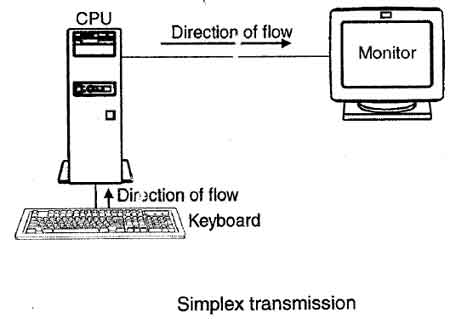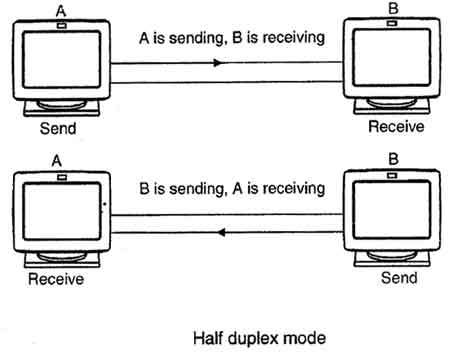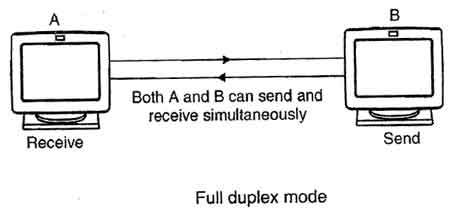The term Transmission Mode defines the direction of the flow of information between two communication devices i.e. it tells the direction of signal flow between the two devices.There are three ways or modes of data transmission: Simplex, Half duplex (HDX), Full duplex (FDX)
Simplex: In
Communication Networks, Communication can take place in one direction
connected to such a circuit are either a send only or receive only
device. There is no mechanism for information to be transmitted
back to the sender. Communication is unidirectional. TV broadcasting is
an example. Simplex transmission generally involves dedicated circuits.
Simplex circuits are analogous to escalators, doorbells, fire alarms and
security systems:
Examples of Simplex mode:
- ACommunication between a computer and a keyboard involves simplex duplex transmission. A television broadcast is an example of simplex duplex transmission.
2.
Another example of simplex transmission is loudspeaker system. An
announcer speaks into a microphone and his/her voice is sent through an
amplifier and then to all the speakers.
3. Many fire alarm systems work the same way.
Half Duplex: A
half duplex system can transmit data in both directions, but only in
one direction at a time that mean half duplex modes support two-way
traffic but in only one direction at a time. The interactive
transmission of data within a time sharing system may be best suited to
half-duplex lines. Both the connected devices can transmit and receive
but not simultaneously. When one device is sending the other can only
receive and vice-versa. Data is transmitted in one direction at.a time,
for example. a walkie-talkie.
This
is generally used for relatively low-speed transmission, usually
involving two-wire, analog circuits. Due to switching of communication
direction, data transmission in this mode requires more time and
processes than under full duplex mode. Examples of half duplex
application include line printers, polling of buffers, and modem
commuriications (many modems can support full duplex also).
Example of half duplex mode:
A
walkie-talkie operates in half duplex mode. It can only send or receive
a transmission at any given time. It cannot do both at the same time.
As
shown in fig. computer A sends information to computer B. At the end of
transmission, computer B sends information to computer A. Computer A cannot send any information to computer B, while computer B is transmitting data.
Full Duplex: A full duplex system can transmit data simultaneously in both directions on transmission path. Full-duplex
method is used to transmit the data over a serial communication link.
Two wires needed to send data over a serial communication link layer.
Full-duplex transmission, the channel capacity is shared by both
communicating devices at all times.
Both
the connected devices can transmit and receive at the same time.
Therefore it represents truly bi-directional system. The link may
contain two separate transmission paths one for sending and another for
receiving.
Example of Full duplex mode:
Telephone
networks operate in full duplex mode when two persons talk on telephone
line, both can listen and speak simultaneously.



